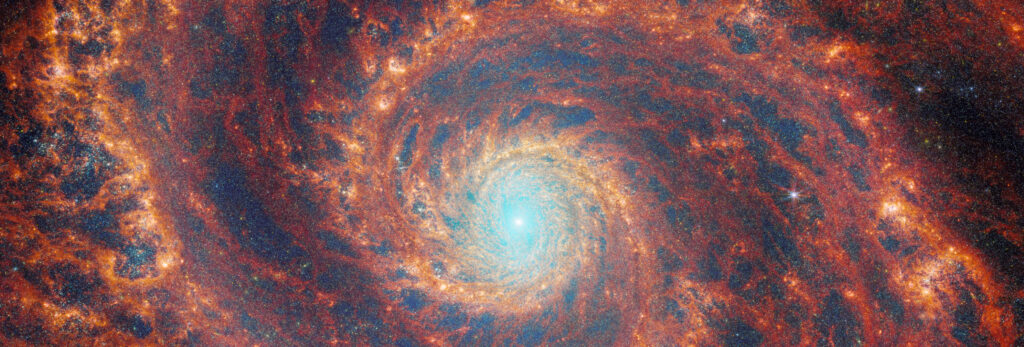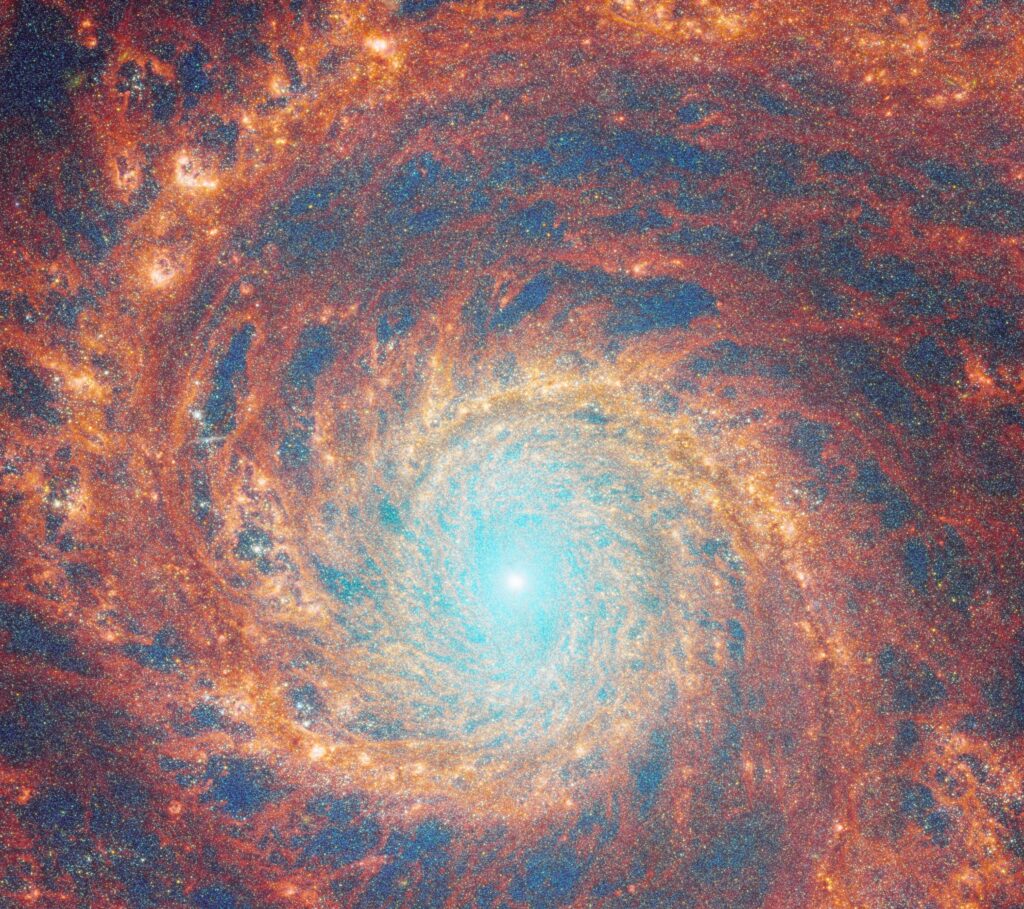The team of the James Webb Space Telescope (JWST) has released a new stunning image, showcasing the center of the galaxy M51, also known informally as the Whirlpool Galaxy.

Located 27 million light-years away in the constellation Canes Venatici, the M51 galaxy, like our Milky Way, is a spiral galaxy. M51 earned its nickname due to its distinctive appearance. This is explained by the gravitational interaction of M51 with the less massive neighboring galaxy NGC 5195. As a result, one of M51’s spiral arms has stretched and merged with NGC 5195, forming a gigantic star-dust bridge.
The JWST image was constructed by combining shots taken in near and mid-infrared wavelengths. The dark-red regions correspond to warm dust filaments permeating the galaxy. The red areas depict reflected light from complex molecules forming on dust grains, while the orange and yellow hues represent regions of ionized gas from recently formed star clusters. The black areas correspond to bubbles forming within surrounding gas and dust clouds under the influence of powerful radiation from young stars.
One can also notice the bright core of M51. Within it resides a supermassive black hole, the source of jets and active emissions in radio and optical wavelengths.

The image of M51 was taken as part of the FEAST project (Feedback in Emerging extragalactic Star clusters). Its primary objective is to study regions of active star formation in other galaxies and assess their impact on galactic development and evolution.
Previously, we reported on how James Webb captured previously unknown details of the Ring Nebula.
Source: https://esawebb.org.
